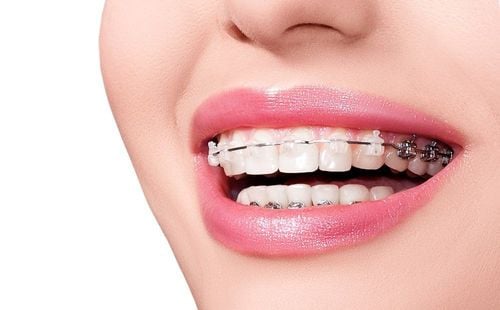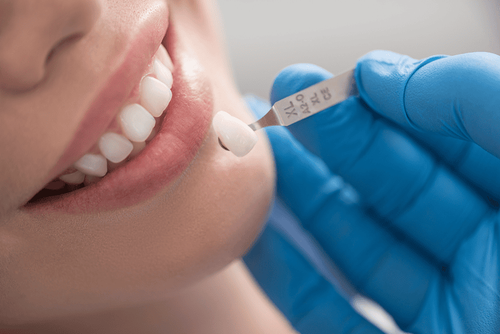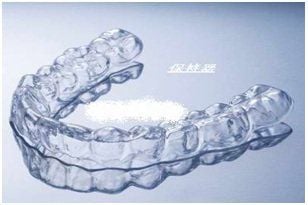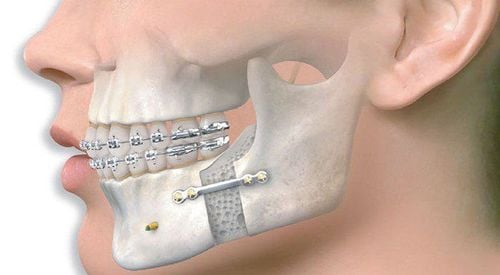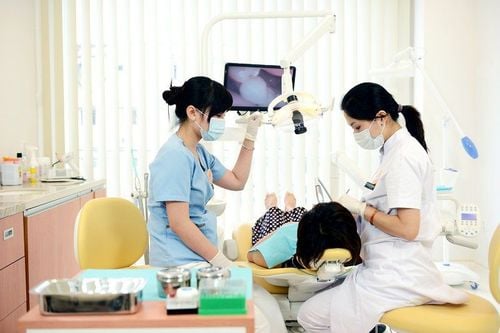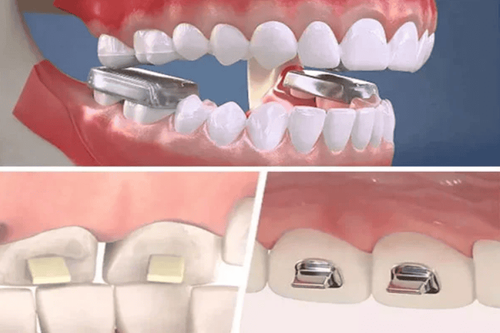This is an automatically translated article.
The article was professionally consulted with Master, Doctor Dang Tien Dat - Doctor of Dental - Jaw - Facial - Department of Medical Examination & Internal Medicine - Vinmec Ha Long International Hospital.Tooth subsidence is a supportive method in braces to reduce the bone above the teeth, the gums are less open and the teeth are not shortened, and the teeth are moved as desired. This method applies to people with gummy smile, deep bite, open bite,...
1. What is tooth decay? Why should you brush your teeth when wearing braces?
Tooth subsidence is an orthodontic support technique in braces, which is performed by pulling 1 tooth or 1 block of upper molars higher than the original. This method is done by implanting 1-2 minivis into the jawbone, then using a dental elastic to connect the minivis to the braces. The pulling force from the elastic band will have the effect of adjusting the teeth to be reduced, not overlapping downwards and the teeth will return to the desired position.
Depending on the condition of each person's molars, the doctor will calculate the appropriate position to place the minivis, achieving the best results.
For cosmetic orthodontic cases, tooth decay is a fairly simple technique that has outstanding advantages compared to other techniques such as:
Limiting the need to extract teeth when braces: In many cases In this case, when brushing the molars, it is still possible to create force to help the teeth move without needing to extract the teeth. Many people with braces still have to pull teeth, although it does not affect oral health, it is still painful and certainly no one wants to have teeth extracted. No need for jaw surgery: If the jawbone structure is overdeveloped, if before, someone with a deep bite will have to have surgery, which is both risky and painful, so sinking incisors is the perfect solution. Perfect, safe. The method of sinking teeth will help the jaw balance, be safe, and limit the need to perform complicated and effective surgery for those who have protruding teeth.
2. The current popular method of sinking teeth
Currently, there are 2 commonly applied techniques of subsidence: Indentation of teeth with archwires and subsidence of teeth with minivis.
Indentation of teeth with archwire This is a method of indenting teeth using another CNA arch wire with the size of 0.17 x 0.25 in Proform form. The arch wire will be bent in a ladder shape with an angle of 120 degrees at the position between the 2nd and 3rd teeth in both the patient's 2, then connected to the bracket system to assist in the implementation. incisor chipping.
Brush teeth with minivis Minivis, also known as braces screws. They are designed like a screw, small in size. The doctor will plug them into the upper jaw bone and use an elastic band to attach to the hook to create force, helping the teeth to move quickly, to the desired position.

3. When is it necessary to do the sinking of the teeth, the sinking of the front teeth?
The main effect of the tooth decay technique is to correct a gummy smile without surgery or to help support during orthodontic braces (usually for patients with a deep bite or an open bite).
Indentation of the upper front teeth to correct a gummy smile For those who have a gummy smile, it is usually necessary to perform jaw surgery, however, if the degree of gummy smile is mild, the brushing method can be used. sunken maxillary incisors for treatment. At that time, the upper jaw bone will be reduced, but it will not change the length of the teeth, so it will help the smile become more harmonious, the gums will be less exposed.
Help cure deep bite Treating deep bite is one of the uses of the technique of sinking teeth. Depending on the degree and status of each person's deep bite, the doctor will make a relative or absolute subsidence.
With the relative indentation technique, the doctor will lower the lower incisor group or raise the upper incisor group with an arch wire. In addition, it will also be combined with protrusion of the molar area, bringing the bite back to the correct position.
With absolute subsidence technique, the doctor will use minivis to adjust the group of incisors. This method is only applicable when the molar part is not misaligned.
Overcome protruding teeth, long crowns Often people with protruding teeth and protruding jaws will need surgery to cut their jawbone. However, with a mild degree, applying the method of sinking teeth in combination with orthodontics will be effective in overcoming protruding and protruding teeth.
Correction of long-term tooth loss When teeth are lost for a long time, the opposing teeth may protrude or recede, so before replanting the tooth, the doctor may prescribe the need to perform a tooth decay first.
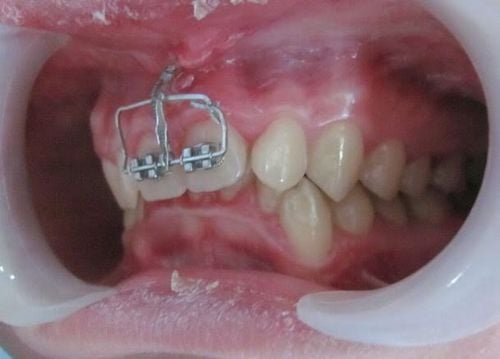
4. Is brushing your teeth painful? How long does it take?
With both techniques of indenting the teeth with archwire or with minivis, it usually takes only 15-20 minutes, but to completely remove the wire or minivis depends on the condition of the teeth. Usually after about 3-6 months, this appliance will be removed.
During the procedure, the teeth will be numbed so there will be no pain. After the anesthetic wears off, it is necessary to follow the instructions of the dentist to limit pain and take care of the teeth properly.
=>> Advice from Master, Doctor Dang Tien Dat - Dentist - Maxillofacial Doctor - Department of Medical Examination & Internal Medicine - Vinmec Ha Long International General Hospital: Indentation is the technique used in orthodontics (orthodontics) when the patient has problems such as gummy smile, deep bite. The team of Odonto-Stomatology specialists and experts at Vinmec will give appropriate indications for tooth decay, perform the correct technique, and be safe for the patient.
Please dial HOTLINE for more information or register for an appointment HERE. Download MyVinmec app to make appointments faster and to manage your bookings easily.





